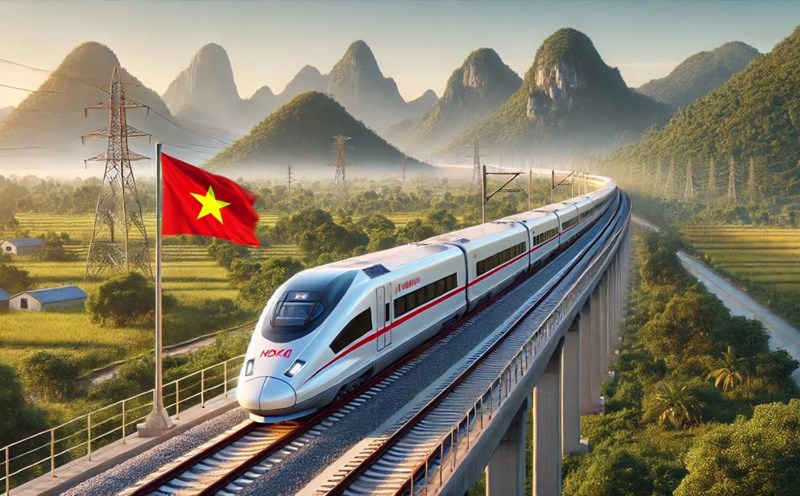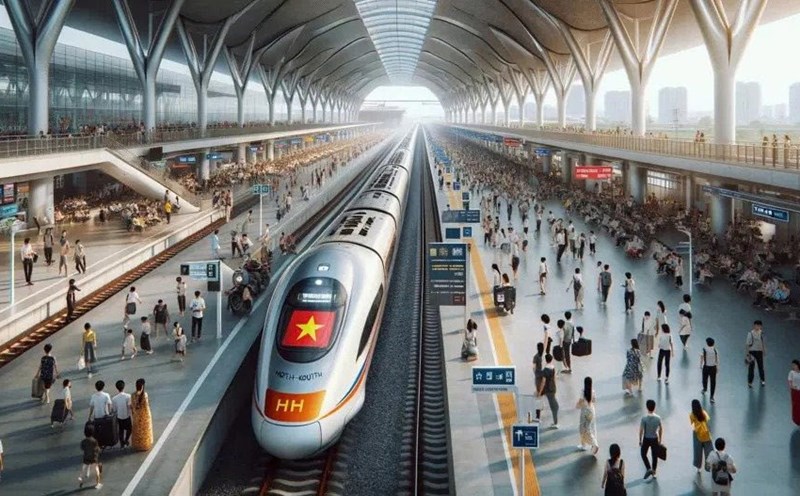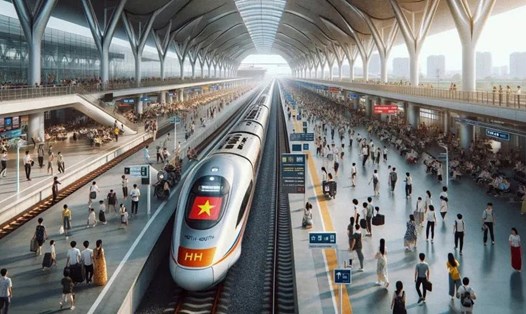Study on extending high-speed railway line
On the morning of November 13, the National Assembly discussed in groups the investment policy for the high-speed railway project on the North-South axis.
Delegate Nguyen Thi Hong Hanh (HCMC delegation) proposed to study the extension of the high-speed railway to the western provinces, including Can Tho. These are provinces that do not have many highways, and traffic jams are very serious during holidays and Tet.
Pointing out that Can Tho is the capital of the West, delegates suggested considering extending the high-speed railway line to this area.
Delegate Pham Khanh Phong Lan (HCMC delegation) suggested careful consideration when implementing this project. The delegate was concerned about the issue of public debt and the lack of differentiation in the way the project is implemented, with the risk of slow disbursement, site clearance, and even negative issues and capital overruns. This is an experience that has been drawn from large projects.
Raising the issue of waste, the delegate said that having an additional means of transport would be great, but if compared to the need for hospitals for people and schools for children, a fast but unsynchronized means of transport is needed.
The delegate cited that our country currently has 22 airports (15 domestic airports, 7 international airports) and will achieve the goal of having an airport in every province. If we calculate the effectiveness of high-speed railways, which means of transport will people choose to use?

The delegation of Ho Chi Minh City emphasized the role of transporting goods, not people. Goods transported from the West do not stop at Hanoi but must go to Lang Son and cross the border for trade. Goods need to be transported quickly, connecting from the South to the North, not just people.
"In terms of economics, the efficiency compared to the money spent needs to be reviewed. There are many people who dream of 'in the morning I go from Ho Chi Minh City to Hanoi to eat pho and then go back', but only unemployed people do that," said the delegate.
Be impatient to jump into work, if there is a mistake then you have to pay the price
The delegate said that currently, the highways are mainly concentrated in the North, while the West is almost a neglected lowland area with very little traffic. This issue needs to be carefully calculated because every penny spent in the budget comes from the people's tax money, which is very sad.
"With the sluggish way of doing things, not being able to disburse funds, being too impatient to jump into work and if there are mistakes, whoever does it will have to pay the price," said the delegate, suggesting that the freight factor must be considered the most important.
Delegate Tran Thi Dieu Thuy (Ho Chi Minh City Delegation) agreed with the calculation of extending the high-speed railway to the Western provinces and from Hanoi to the Northwestern provinces. This should be considered a vital route for the circulation of goods.
"I wish that the fruits picked in the morning from the garden in the West would be sold in the afternoon at the supermarket in Hanoi. Only then can we solve the problems of transporting goods and logistics.
Delegate Tran Hoang Ngan (HCMC delegation) said that the Government's submission of the project has met practical and political requirements. This project passes through 20 provinces and cities, including 23 passenger terminals and 5 cargo terminals.
In terms of effectiveness, the delegate emphasized that the project, which will pass through 20 provinces and cities, will promote the potential, advantages, and budget revenue of these localities. With stations having railway lines passing through, land prices will increase. The issue of land auctions in those areas will be divided between the local and central budgets to compensate for this project also needs to be considered.
Delegates noted the need to ensure consistency between planning types. Currently, the two planning schemes for Hanoi and Ho Chi Minh City have not been approved by the Prime Minister. When approving the planning, this project planning must be integrated to avoid adjustments.











